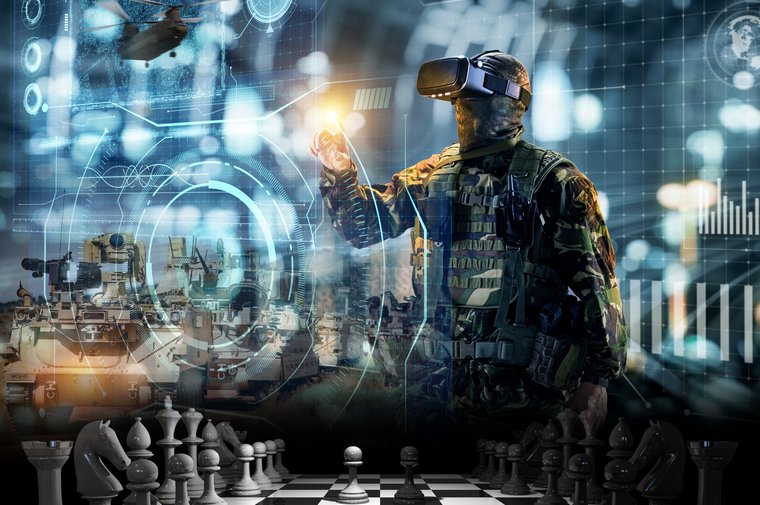Artificial Intelligence (AI) is revolutionizing the way military operations are conducted, especially in the realm of counterinsurgency operations. As conflicts become more complex, the role of AI in enhancing strategic capabilities is becoming increasingly important. In this article, we will explore how AI technologies are transforming counterinsurgency operations, and what the future holds for military strategies worldwide.

Understanding Counterinsurgency Operations
Counterinsurgency operations are military, paramilitary, political, economic, psychological, and civic actions taken to defeat insurgency. These operations are challenging due to the nature of guerrilla warfare and the need for precise intelligence gathering. AI is stepping in as a powerful tool to aid in these operations by providing enhanced data analysis and decision-making capabilities.
The Role of AI in Military Strategy
AI’s integration into military strategy is not just about automation but also about enhancing human decision-making. By analyzing vast amounts of data quickly, AI systems can identify patterns and predict insurgent activities, allowing for more proactive measures. This is particularly relevant in counterinsurgency operations where time-sensitive decisions are crucial.
Improving Intelligence Gathering
One of the key areas where AI is making a difference is in intelligence gathering. AI-powered systems can process information from various sources, such as satellite imagery and social media feeds, to provide comprehensive situational awareness. This capability is crucial in environments where insurgents blend in with the local population.
Enhancing Surveillance and Reconnaissance
AI technology is enhancing surveillance and reconnaissance through the use of drones and autonomous vehicles. These technologies can monitor large areas with precision, providing real-time data to military personnel. As highlighted in a recent article on drone swarms, drones can operate in swarms to cover more ground and gather intelligence more effectively.
Supporting Decision-Making
AI assists commanders by providing data-driven insights to support decision-making. This includes predicting potential threats and suggesting optimal courses of action. AI systems can simulate different scenarios, allowing military leaders to evaluate the outcomes of various strategies before implementation.
Challenges and Considerations
While AI offers significant advantages in counterinsurgency operations, there are challenges to consider. One major concern is the ethical implications of AI in warfare. The decision-making process in life-and-death situations raises questions about accountability and the potential for unintended consequences.
Ensuring Ethical Use
To address these concerns, it is crucial to establish ethical guidelines for AI use in military operations. This includes ensuring transparency in AI algorithms and maintaining human oversight in critical decisions.
Data Security and Privacy
Data security is another critical consideration. Protecting sensitive information from cyber threats is paramount to maintaining the integrity of AI systems and ensuring the safety of military operations. For more insights, check out our article on AI and edge computing.
The Future of AI in Counterinsurgency Operations
The future of AI in counterinsurgency operations looks promising. As technologies advance, AI will continue to enhance military capabilities, making operations more efficient and effective. The key will be balancing technological innovation with ethical considerations to ensure that AI is used responsibly.
Potential Innovations
Potential innovations include the development of AI systems that can operate autonomously in the field, reducing the need for human intervention. Additionally, AI could enhance predictive modeling to foresee insurgent activities and improve mission planning. For more on this, explore our article on predictive modeling.
Collaboration and Integration
Collaboration between military forces and technology companies will be essential to harness the full potential of AI. By integrating AI into existing systems and strategies, military organizations can create a more interconnected and responsive defense network.
Conclusion
In conclusion, counterinsurgency operations AI is transforming military strategy by providing enhanced intelligence, improving decision-making, and offering new tools for surveillance and reconnaissance. As we move forward, it is essential to address ethical concerns and ensure that AI is used responsibly in military operations. With careful consideration and strategic planning, AI has the potential to revolutionize the way counterinsurgency operations are conducted, making them more effective and efficient.

FAQ
What is the primary role of AI in counterinsurgency operations?
The primary role of AI in counterinsurgency operations is to enhance intelligence gathering, improve decision-making, and provide tools for surveillance and reconnaissance.
What are the ethical concerns surrounding AI in military operations?
Ethical concerns include the transparency of AI algorithms, accountability in decision-making, and the potential for unintended consequences in life-and-death situations.
How can AI improve intelligence gathering in counterinsurgency operations?
AI can improve intelligence gathering by processing information from various sources, such as satellite imagery and social media feeds, to provide comprehensive situational awareness.

